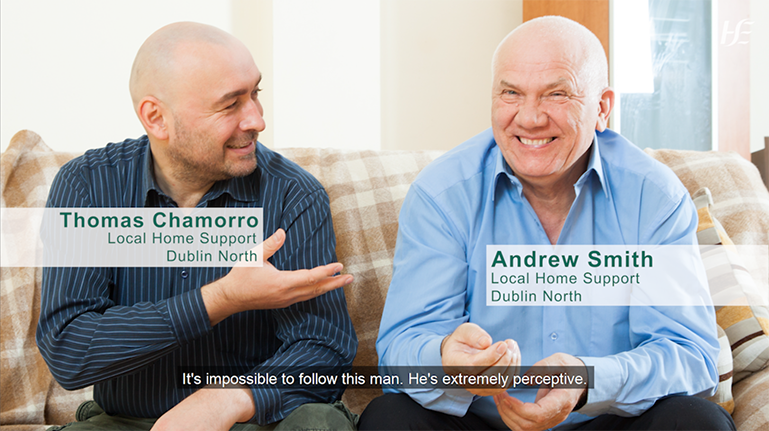People's titles (lower thirds)
People’s titles or lower thirds
Lower-third text refers to text that is traditionally positioned on the lower third area of the screen – usually names and titles of interviewees.
Only add a title if it is useful for the viewer.
You don't need to add a title if:
- the person has verbally identified themselves on camera
- the video is being hosted on social media and they will be identified in the social copy
How to structure titles for people
- Start with a white rectangle
- Add text in green Arial font - colour code #02594C
- Ensure the text alignment is set to left-aligned
- Add the person's title in Arial Bold and place it on top of any subheadings

Subheadings
- Subheadings can be used to identify extra details like the person’s job title, department or organisation
- Use Arial regular font for subheadings on a new line
- Size this text smaller than the Arial Bold name title
Where to place the title on the screen
Position the title where it will be most readable. It should not cover the person's face or subtitles.
Make sure the text does not have too much white space around it.
Always left-align the text.


When editing
The title should only be on screen for as long as the viewer needs to read it (around 3 to 5 seconds).
Titles should not be more than 3 lines.
In your video editor, crossfade the title so that it fades in and out of the video seamlessly.
Remember to identify each subject only once. You don't need to title anyone who is not speaking.
Identifying more than one person
Follow the same guidelines but make sure the titles do not overlap.


